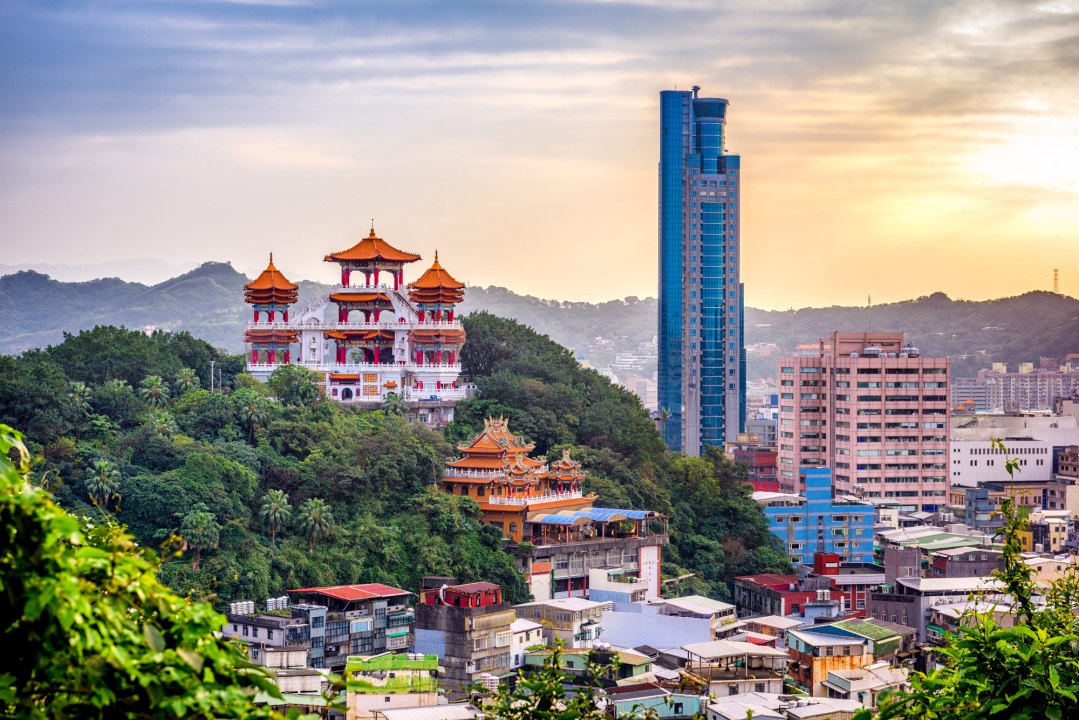Things could have been very different. Since the distant days of the first Trump presidency, Taiwanese tech companies have been shifting production from China to Taiwan due to US tariffs and tech controls aimed at China. For the US, that strategy has borne some fruit.
Most countries tend to trade the most with their close neighbours. But in February, for the first time in over two decades, Taiwan’s top export destination for goods was not China and Hong Kong, but America, thousands of miles across the Pacific. It was a tremendous victory for America on the frontline of the US-China rivalry.
Instead, the arrival of that milestone was greeted with trepidation in Taipei. The recent announcement of tariffs on Canada showed that Trump was willing to throw a close ally of many decades under the bus. His comments from the campaign trail about Taiwan stealing the US chip industry and free-riding on America’s security umbrella suggested he was unlikely to be more amical to Taiwan. In Trump’s world, integration with the US economy is not a blessing. It is leverage he will use.
Trump’s ‘Liberation Day’ was not kind to Taiwan. The $100 billion the Taiwan Semiconductor Manufacturing Company (TSMC) announced it was investing in the US in March seemed to make little difference: the President brought in tariffs of 32 per cent on Taiwanese goods, higher than on Japan (24 per cent) or South Korea (26 per cent), based on some bizarre calculation using the trade in goods deficit.
The semiconductor industry was spared – Trump’s recklessness does, it seem, have some bounds. But Taiwan’s economy will still take an enormous hit. Exports contribute 60 per cent of Taiwan’s GDP, a quarter of which is to the US. Taiwan’s cabinet described the US tariffs as ‘deeply unreasonable’ and ‘highly regrettable’. Spokeswoman Michelle Lee said that the government would ‘lodge a solemn representation’ with the US Trade Representative. With new tariffs on over 150 countries, they could be in a very long queue.
There is now discussion about what, if anything, could placate Mr Trump. President Lai has said there would be support for businesses affected by the tariffs. But if Taiwan is to make a deal with Trump to prevent these tariffs coming into effect, it must have something to offer in a negotiation. Policymakers here are discussing concessions they can offer in two areas: reducing barriers to US imports and shrinking the size of the trade deficit.
The trade barriers, laid out in the 2025 National Trade Estimate Report, turn out to be limited and rather tedious. There are protections for certain agricultural products like pineapples. Imports of certain US beef productions are restricted following detection of the disease BSE in 2003. Sometimes chipping potatoes are rejected due to technical restrictions on sprouting for imported potatoes. Different safety standards for cars are applied in different countries. Taiwan uses standards from Europe which US cars do not meet, but allows a certain number of US-compliant car imports, subject to a tariff of 17.5 per cent.
All of this feels very small-bore for an American president to get worked about. I doubt these particularly trouble most businesspeople either. Japanese-style beef is popular in expensive restaurants here, but I doubt there is much additional demand American exporters could meet. As much as the Taiwanese love fried food, I’m not sure these sprouting restrictions are seriously holding back the US potato market. As for cars, America’s huge SUVs would not be well-suited to Taiwan’s narrow, chaotic roads. Where on earth would you park one? Scooters are popular here for a reason.
Trump’s other gripe is the enormous trade surplus. Last year, it stood at $73.9bn, a 54.6 per cent rise year-on-year that can be fully explained by a huge increased in exports of high-tech components. To be clear, America’s close relationship with one of the centres of global tech manufacturing is an enormous privilege. But if Trump is so hellbent on reducing the trade imbalance, there are two ways to do it. One is for the US to buy less from Taiwan. But that seems unlikely: the US tech industry is hungry for Taiwanese-made tech inputs, some of which no other country can manufacture. Taiwan’s top three US exports are computers, computer parts, and integrated circuits. Only a major slowdown in the US tech sector could put a serious dent in Taiwan’s total exports to the US.
The other option is for Taiwan to import more from the US. The options for reducing Taiwan’s trade surplus in the short term are quite limited. America does export some high-value goods like passenger jets to Taiwan, but there is little need for more of them. There is more scope for low-value goods like agricultural products and fossil fuels. Economists here are talking particularly about buying more US natural gas and oil. But that can only go so far in reducing the trade deficit. More to the point, it makes Taiwan even more vulnerable. Local energy-hungry industries are highly reliant on energy imports. Taiwan could placate Mr Trump somewhat by increasing its dependence on America. But experience shows that that could just become a way for Trump to exert more pressure in the future.







Comments